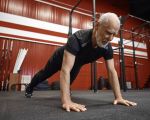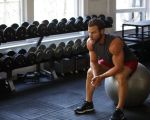1. Understanding Full Body Strength Training
Full body strength training focuses on working all major muscle groups in a balanced manner to build overall power and endurance. Unlike split routines targeting isolated muscles, full body workouts promote functional fitness and improve coordination.
This approach is especially beneficial for beginners and those looking for efficient gym routines. It enhances metabolism, promotes muscular symmetry, and reduces the risk of injury by developing balanced strength.
2. Key Exercises for a Full Body Strength Routine
Effective full body strength routines include compound movements such as squats, deadlifts, bench presses, overhead presses, and rows. These exercises engage multiple muscle groups simultaneously, maximizing workout efficiency.
Incorporating bodyweight movements like push-ups and pull-ups further improves core strength and stability. Varying the exercise selection helps prevent plateaus and keeps the routine engaging.
3. Structuring Your Workout Routine for Maximum Results
A well-structured routine includes a warm-up, main workout, and cool-down phases. Plan workouts 3-4 times per week, allowing recovery between sessions. Focus on progressive overload by gradually increasing weights or repetitions.
Balancing volume and intensity ensures steady strength gains without overtraining. Tracking progress and adjusting the routine based on your goals is essential for sustained improvement.
4. Importance of Proper Form and Injury Prevention
Maintaining correct form during exercises prevents injuries and ensures targeted muscles are effectively engaged. Using mirrors, seeking professional guidance, or recording yourself can help refine technique.
Listen to your body and avoid pushing through pain. Incorporating mobility and flexibility work complements strength training and supports joint health.
5. Nutrition and Recovery for Strength Gains
Proper nutrition fuels workouts and supports muscle repair. A diet rich in protein, complex carbohydrates, healthy fats, and adequate hydration enhances performance and recovery.
Rest days and quality sleep are critical for muscle growth and preventing burnout. Supplementing workouts with stretching and relaxation techniques aids recovery.
6. Real-Life Success Story
Michael, a 35-year-old office worker, transformed his fitness by adopting a gym workout routine for full body strength. Within six months, he improved his lifting capacity, reduced back pain, and increased energy levels.
Michael credits his success to consistency, focusing on compound lifts, and following nutrition advice. His story demonstrates how effective full body routines can fit busy lifestyles and deliver remarkable results.
7. Tips for Long-Term Strength Maintenance
To maintain strength gains, vary your routine every 8-12 weeks, incorporate different modalities like resistance bands or kettlebells, and keep challenging your muscles.
Set realistic goals, celebrate milestones, and stay motivated by tracking improvements. For expert workout plans and fitness gear, visit Fitness for personalized solutions tailored to your strength journey.








